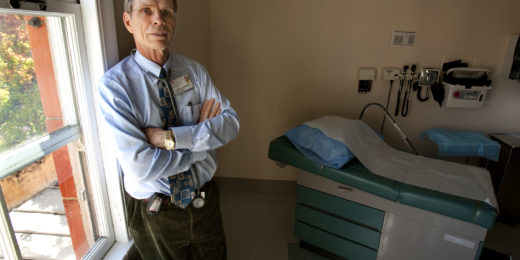According the Centers for Disease Control and Prevention, to date, the COVID-19 pandemic has caused more than 1 million excess deaths in the United States -- lives not expected to be lost in ordinary times. A new study by Stanford Medicine researchers tabulated excess mortality among physicians.
In the study, published Feb. 6 in JAMA Internal Medicine, the researchers found that there were more than 600 excess deaths among physicians - an average of 43 excess deaths per 100,000 physicians per year. Excess mortality rate was higher among older doctors.
To calculate excess deaths, the researchers compared deaths in March 2020 through December 2021 against deaths during a pre-pandemic period, January 2016 through February 2020, controlling for normal seasonal trends. They included only adults aged 45 to 85 because excess mortality was much lower in younger people during the pandemic.
"Any excess death is a tragedy," said Mathew Kiang, ScD, a Stanford School of Medicine assistant professor of epidemiology and population health and lead author of the paper. "Understanding trends among different groups could help us save lives the next time around."
Unexpected findings
Data on physician deaths were from the American Medical Association. The organization also tracks where each physician practices and their type of practice, which led the researchers to an unexpected finding.
Among physicians aged 45 to 64, those who had the most patient contact had the lowest excess mortality per year at 27 deaths per 100,000 people, while non-active physicians (such as those retired or no longer working in medicine) had the highest, at 140 deaths per 100,000 people.
"The fact that the ones who are actively practicing patient care seem to have lower excess mortality implies there's something about that work environment that is safe," Kiang said.
The researchers speculate that more stringent workplace protections in health care settings, such as masking, ventilation, testing and vaccination requirements, could help account for the difference.
Indeed, deaths among working physicians declined rapidly after December 2020, coinciding with the beginning of vaccinations for health care workers. By April 2021, there was no longer any statistically significant excess mortality in this group.
According to data from the CDC, excess mortality among the general population was even higher during the study period, with an average of 294 excess deaths per 100,000 people per year.
That doctors fared better was both surprising and not surprising to Kiang.
"There are two things at work," he said. On one hand, because mortality rates are generally lower for those with higher incomes and more education, physicians benefit from having a relatively higher socioeconomic status than the general population.
"But the flip side is physicians are also much more exposed to SARS-CoV2 than the general population," Kiang said. "So it wasn't completely clear how many, if any, excess deaths to expect."
Protecting health care workers
If workplace protections are effective, would those who share the same work environment, like nurses, also have lower excess mortality?
Kiang said they had tried to but could not find similar data for nurses. "I would hope so," he said. "But it's an open question that's worth investigating, as nurses often are really at the front lines and interacting with many more patients."
The new findings are a reminder of how many more lives could have been saved among the general population, and especially other essential workers, with the right protections. An earlier study by Kiang found that among all workers in California, those in agriculture, manufacturing, transportation and logistics died at the highest rates from COVID-19 -- roughly three times as high as that of health workers.
"This probably won't be the last pandemic, unfortunately," Kiang said. "Figuring out how to protect people who we depend on to respond to the pandemic is important, and we clearly could have done better with this one."
Researchers from the American Medical Association, the University of California San Francisco and the University of Southern California also contributed to the study.
Photo by Rick Lohre






